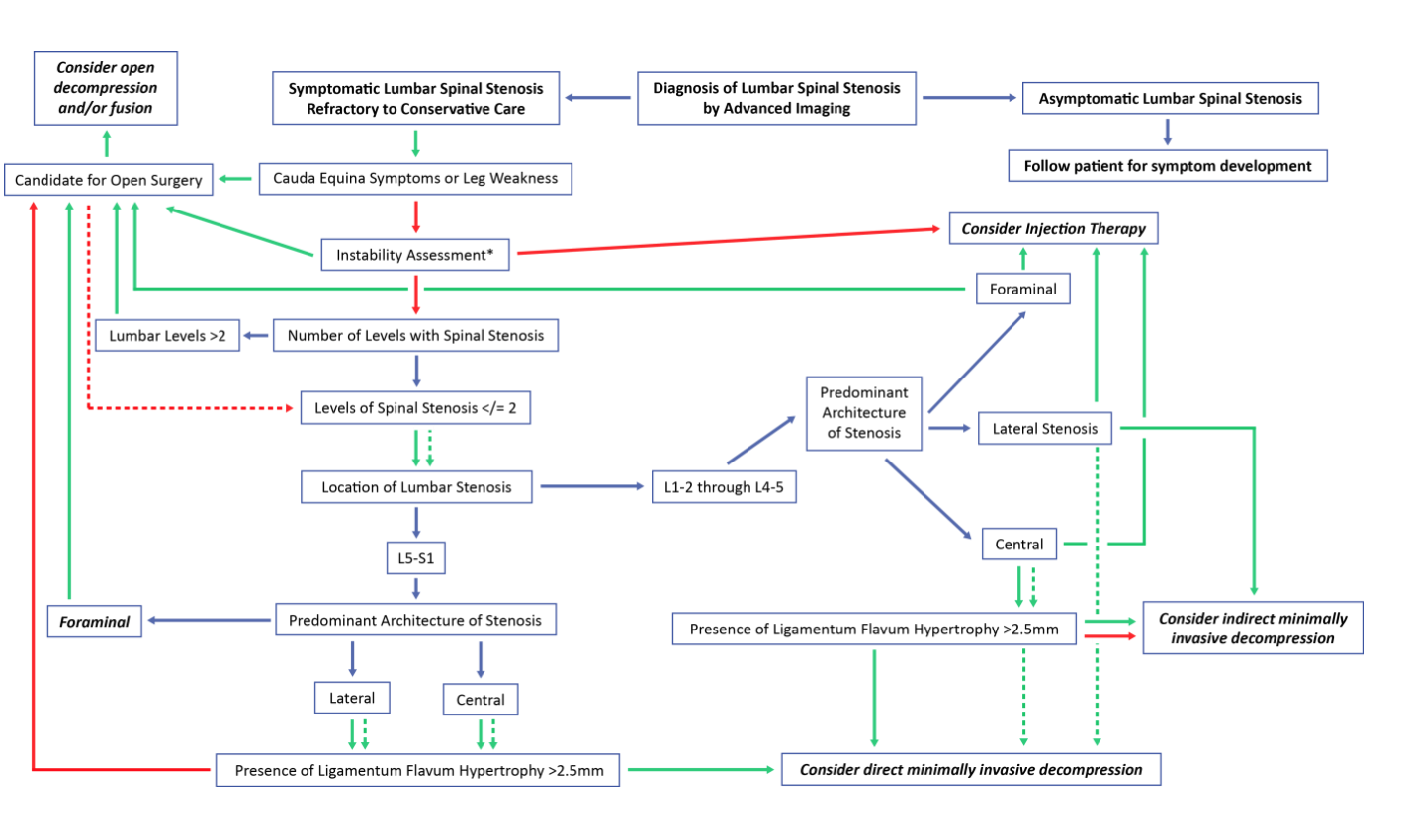Table of Contents
Lumbar spinal stenosis treatment
The superiority of surgical treatment over conservative approaches has been reported in several studies with a large number of surgical and conservative procedures and numerous criteria used to evaluate treatment efficiency were used for evaluation. However, a meta-analysis from the Cochrane Library in 2016, suggested that current evidence comparing surgery to non-surgical approaches in lumbar spine stenosis was of low quality and that standardized conservative protocols were needed 1)
Held et al., from the Municipal Hospital Triemli 2019 estimated the effect of surgical compared with nonoperative treatment in a large number of patients with degenerative lumbar spinal stenosis. This research is important for clinicians as well as patients in the decision-making process 2).
The Lumbar spinal stenosis treatment choice is dependent on the degree, spinal or anatomic level, and architecture of the stenosis, the severity of the symptoms, failed, past, less-invasive treatments, previous fusions or other open surgical approaches, and patient comorbidities. There is Level I evidence for percutaneous image-guided lumbar decompression (PILD) as superior to lumbar epidural steroid injection, and 1 RCT supporting spacer use in a non-inferiority study comparing spacer products currently available.
Minimally invasive spine treatments should be used in a judicious and algorithmic fashion to treat LSS, based on the evidence of efficacy and safety in the peer -reviewed literature. The MIST Consensus Group recommend that these procedures be used in a multimodal fashion as part of an evidence-based decision algorithm.
3).
In 2016 there was very little confidence to conclude whether surgical treatment or a conservative approach is better for lumbar spinal stenosis, and we can provide no new recommendations to guide clinical practice. However, it should be noted that the rate of side effects ranged from 10% to 24% in surgical cases, and no side effects were reported for any conservative treatment. No clear benefits were observed with surgery versus non-surgical treatment. These findings suggest that clinicians should be very careful in informing patients about possible treatment options, especially given that conservative treatment options have resulted in no reported side effects. High-quality research is needed to compare surgical versus conservative care for individuals with lumbar spinal stenosis 4).
In 2013 no evidence-based recommendation on the diagnosis and treatment of lumbar spinal stenosis in older people can be formulated at present because of the lack of pertinent randomized controlled trials 5).
